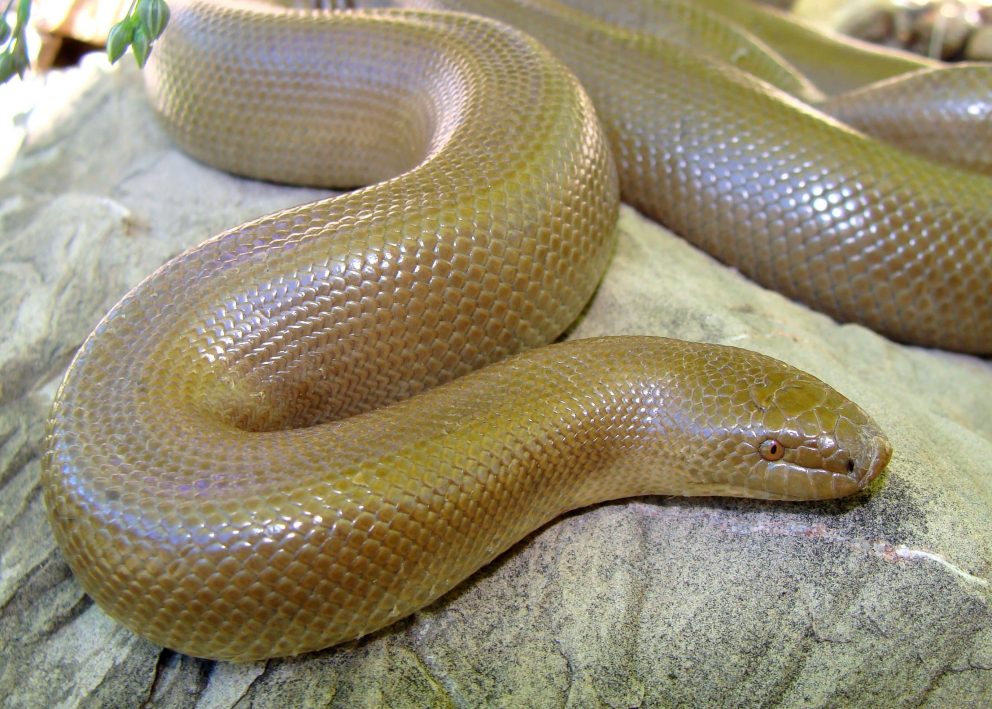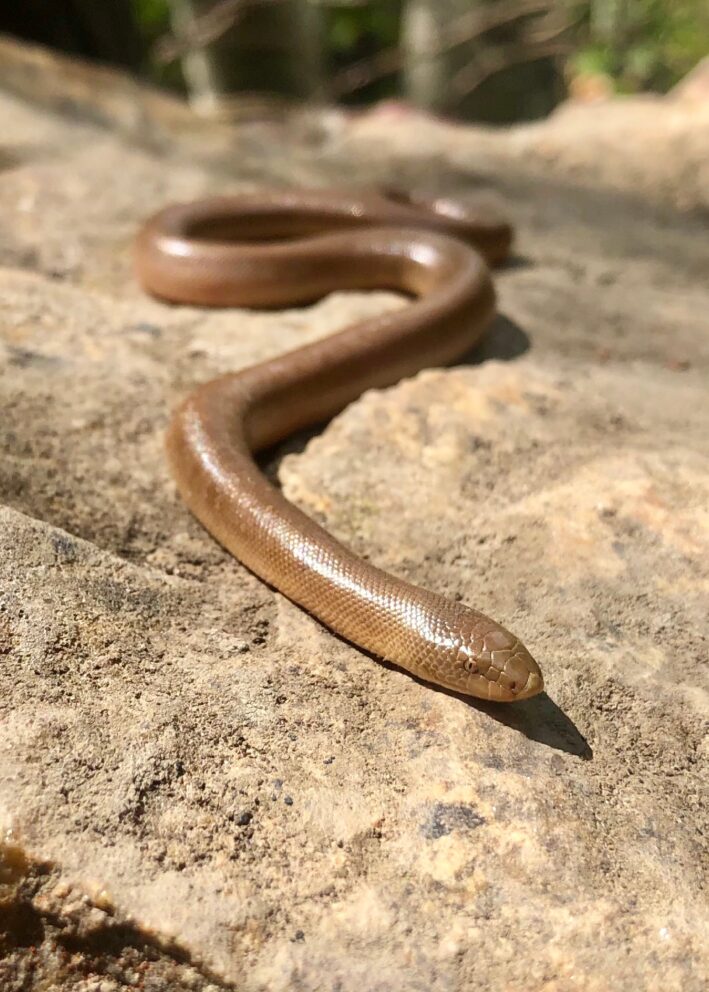- SCIENTIFIC NAME
- Charina bottae
- CLASSIFICATION
- Reptile
- LIFE SPAN
- 7-30 Years
- SIZE
- 12-28” | 0.06-0.15lbs
- STATE CONSERVATION STATUS
-
- Priority Species
- Unprotected
- FEDERAL CONSERVATION STATUS
- Least Concern
- GAME STATUS
- Non-Game
- Washoe
- Humboldt
- Pershing
- Churchill
- Mineral
- Lyon
- Douglas
- Carson City
- Storey
- Elko
- Lander
- Eureka
- White Pine
- Esmeralda
- Nye
- Lincoln
- Clark
Habitat & Range
Rubber Boa habitat includes woodlands, forest clearings, patchy chaparral, meadows, and grassy savannas. Generally, this snake is found in or under rotting logs or stumps, under rocks or in crevices, or under the bark of dead fallen trees. They are only found in northern Nevada.
- Alpine forests of the Sierras
- Grasslands
- Pinyon juniper forests
Threats
- Drought
- Overcollection
Natural History
The Rubber Boa’s diet includes mice, shrews, lizards, lizard eggs, snakes, and small birds. This species kills prey by constriction. Rubber Boas are largely crepuscular and nocturnal but may be active by day during the breeding season.
Rubber Boas give live birth to between 2 and 8 young. These snakes are long-lived and reach sexual maturity around 2-3 years of age.
These snakes are incredibly docile and secretive. They are slow moving compared to most other snakes but are very good at swimming and climbing. They’re main form of defense is to release a foul-smelling musk. Common predators are raccoons, coyotes, ravens, birds of prey, and bobcats.
Fun Facts














